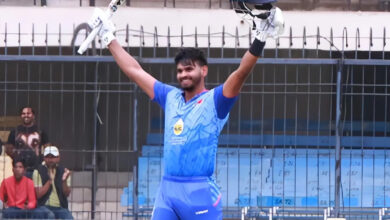Cricket World Cup: Ahead of India-Australia game, Chepauk gets four new super-soppers to deal with rain | Cricket-world-cup News

Even though the rain that lashed Chennai over the past week has relented and the forecast continuing to improve, the Tamil Nadu Cricket Association (TNCA) is taking no chances ahead of India’s opening World Cup fixture against Australia and has imported four new super-soppers from Australia. The met office is predicting only a 10 percent chance of rain on the day of the game, excessive heat is expected throughout the week, which could bring about showers from time to time.
Over the past three weeks as the city witnessed widespread rain, the TNCA had to postpone its league matches at least on three occasions. The scenario was no different over the weekend as the scheduled games were played on Monday. Chennai receives heavy to very heavy rainfall from the north-east monsoon which usually picks up pace in October-November. While the met office said prevailing conditions are favourable for the withdrawal of the south-west monsoon, the prevailing heat tends to bring thunderstorms and showers in the region.
With just five days to go for the fixture, work was in full swing at the MA Chidambaram Stadium on Monday, which is scheduled to host four more matches after the India-Australia game. “We have bought four new advanced super-soppers for the World Cup because we don’t want to take any chances. We have also replaced all the old covers with new ones, including heavy ones so that we have all bases covered,” a TNCA official said.
Chepauk stadium under lights. (FILE)
Unlike the Eden Gardens and venues in Sri Lanka, which have a habit of covering the entire field, at Chennai thanks to the good drainage facility only the square and run-up areas would be covered in case of rain.
The outfield has a herring-bone subsoil drainage system in place to suit the three-feet slope, which helps in getting rid of the water quickly. The herringbone system usually has one main pipe which is connected to several ones along the slope which results in water levels receding quickly.
Dealing with dew
Despite the rain over the past two weeks, the Chepauk outfield remained dry with the groundstaff busy giving final touches to the pitches. The Indian Express understands that three pitches are being prepared for India’s first match and the final call would be taken 48 hours before the game. The venue has horically been a spin-friendly one and there have been only five totals in excess of 300, with four coming in the Afro-Asia Cup in 2007. India are yet to touch 300 at the venue and all indications point to a contest with a good balance between bat and ball. On Monday, the pitch did have a green tinge to it with the grass cover holding the surface together in the excessively hot conditions.Most Read
1
Priyamani says ‘half the scenes in The Family Man were improvised’ Manoj Bajpayee, but Shah Rukh Khan sticks to the script
2
Bigg Boss Tamil 7: Here’s the l of contestant set to enter Kamal Haasan show
See More
With the World Cup being held in October-November, there is a fear of dew playing a huge role in the outcome of matches. In such situations, the toss ends up being a crucial factor as teams that bat second tend to have an advantage. However, thanks to the rain factor, dew is unlikely to have any effect on Sunday’s fixture. It is understood that ever since pitch preparation began a couple of weeks ago, there has been no sign of dew, which will be good news for India.
In such a case, the hosts would keep their options open about their bowling combination and could even field three spinners should conditions remain dry. The last time India played Australia at Chepauk in March, Adam Zampa and Ashton Agar played a winning role for the five-time world champions.
During the 2011 World Cup, the groundstaff at Chepauk had to install canopies temporarily over the square to prevent the pitch from breaking under the heat. In that edition, India’s total of 268 against the West Indies was the highest at the venue which hosted four matches. Since then, the Chepauk square has been re-laid twice and off late, the pitch has shown signs of regaining the bounce which was one of its traditional characterics.







